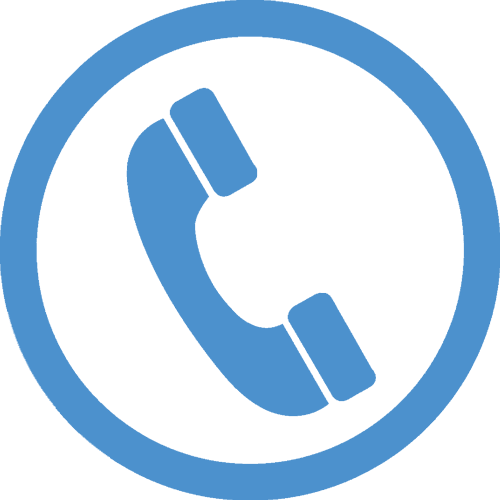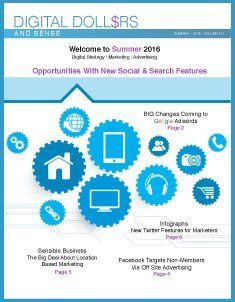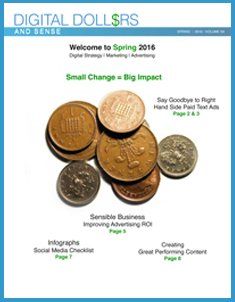Organic and Social Search Optimization
Organic and Social Search Optimization
Organic and Social Search Optimization
Share
Tweet
Share
Mail
Your website exists to do one thing above all else - turn visitors into customers. Concentric SEO best practices help improve the volume and quality of traffic to your website. We adhere strictly to SEO best practices. We closely follow the guidelines set out by Google, Bing and Yahoo! for ensuring that the search engines serve up quality search results and that users have the best possible search experience.
Your website exists to do one thing above all else - turn visitors into customers. Concentric SEO best practices help improve the volume and quality of traffic to your website. We adhere strictly to SEO best practices. We closely follow the guidelines set out by Google, Bing and Yahoo! for ensuring that the search engines serve up quality search results and that users have the best possible search experience.
SEO Features
- Structured process to develop the right best SEO approach for your business,including webpage review, seo research (tags, speed, content, etc) and competitive review for your business/industry
- Follow industry best practices (white hat)
- In-depth understanding of how the infrastructure of the Internet works
- Ability to work with your current suppliers to implement SEO changes
- Benchmarking to measure progress from SEO changes
- Support of multiple devices, networks and content formats
SEO Features
- Structured process to develop the right best SEO approach for your business,including website review, keyword research and competitive review for your business/industry
- Follow industry best practices (white hat)
- In-depth understanding of how the infrastructure of the Internet works
- Ability to work with your current suppliers to implement SEO changes
- Benchmarking to measure progress from SEO changes
- Support of multiple devices, networks and content formats
SEO Highlights
- Structured processes to develop the best SEO approach for your business, including website/content review, keyword research and competitive analysis for your business/industry
- Follow industry best practices - White Hat Techniques
- In-depth understanding of how the infrastructure of the Internet works
- Ability to work with your current suppliers to implement SEO best practices
- Benchmarking to measure progress from SEO changes and updates
- Support of multiple devices, networks and content formats
Get in touch with us.
Receive a FREE Search
Optimization Assessment
Call 604-925-1798 or email.
Get in touch with us.
Receive a FREE Search
Optimization Assessment
Call 604-925-1798 or email us.
Get in touch with us.
Receive a FREE Search
Optimization Assessment
Call 604-925-1798 or email us.
Organic and Social Search Optimization Overview
This is Not a Game of Hide and Seek – Organic Search
What is It?
Search is part of the navigation system of the Internet – a key method of finding information. Organic search results are web page listings that appear in search engine return pages (SERPs) that most closely match the user's search query (keyword or keyword string) based on relevance. Search Engine Optimization is the task of ensuring web pages rank high in the organic results - search engine return pages.
Why Pay Attention to Organic Search?
If you want potential customers to be able to easily find your Internet, web page, social and content offerings and if you want to be known as a leader in a certain topic on search engines such as Google, Yahoo or Bing, then you need to pay attention to organic search. Ensure your content and web pages follow organic search guidelines.
Organic Search Structure - How It Works
The organic search eco system has many “moving parts” and inter-related components, such as:
- Search engines are designed for searching properly structured Web pages and documents (content) on the Internet. They discover the related matter, index the content in a structured form, and return queries made to them in rule-based formats such as the subject matter name, a short description and a link to the specific information.
- Search engines use software programs called “crawlers” to gather new data about Web pages and Internet documents, using sophisticated scheduling algorithms to decide when to visit and revisit a particular page. The algorithms, which, in most cases, are proprietary to the search engines, are programmed for specific visit intervals that use criteria such as frequency of page changes, popularity, overall quality of site, and speed of Web server serving the information.
- Site Maps work with crawlers to create a map of visited pages. Search engines use this technology to get fast access to data retrieved by crawlers and to understand what’s changed on a web page.
- Indexing is the process of extracting text from Web pages and creating a structure that can be used to quickly find which pages contain a particular word or keyword. Search engines differ quite a lot in their indexing processes, in how much data is indexed and in the document formats they use to interpret and extract text.
- Keywords are search terms people enter into the search engines when conducting a search. The terms can be a single word, a group of words, or a short or long phrase, called a “keyword phrase”.
- Meta data refers to page descriptions, page keywords, page descriptions, image tags, alt tags, and heading tags are guides that are placed on web pages to describe your content to web crawlers, in a language and format that major search engines have defined.
- Search Consoles are services offered by Search Engines and Third Party Suppliers that help you monitor and maintain your site's presence in Search results.
- Search Guidelines tell website operators how to make it easier for a search engine to find and index their site and how to get it as high up in the search results as possible. These guidelines also provide information about prohibited activities.
Organic Search Optimization Strategy and digitalroadmaps®
SEO’s objective is to collect as many relevant and quality visitors to your pages as possible and this includes getting visits from the “free,” “organic,” “editorial” or “natural” search results on search engines.
Structuring an SEO plan requires planning, expertise, care and attention. A key component is understanding search structures and applying them to content published on the Internet (including social networks and mobile web pages). When these structures are applied, and search engines are notified that SEO structures exist, you can measured SEO’s effectiveness, through analytics tools, which is a very important cornerstone of SEO activity.
Maintaining the search integrity of the SEO infrastructure as/when content on a web page changes, ensures digital dollar investments in SEO are maintained and improved.
Insights, Tips and Advice Regarding Organic Search
- Click-through rate (CTR) will continue to be correlated with search return positions. New attention grabbing opportunities to be found at the top of search engine return pages (SERPs)include Paid Ads, Carousel results, Knowledge Graphs and Rich Snippets.
- Page Speed is Very Important. Page speed load is considered a ranking factor. If all other things are equal, page speed will outrank a competing site. Research indicates that 40+% of visitors will abandon a site if it takes longer than 3 seconds to load and 50% of visitors expect a site to load in 2 seconds. Also, one second in loading speed is shown to decrease conversions by 7%. (ex: Form completions, eCommerce, etc).
- “Dark Traffic” Affects Organic Reporting. Begin reporting on Dark Traffic as part of your marketing measurements. According to research, when Google Analytics is unable to identify where your site visits are coming from, those visits are now recorded as direct traffic. Create a direct traffic report in Google Analytics and filter out the traffic to pages that are naturally visited “directly”, such as your homepage, front pages and important content sections.
- Keywords and Tags have become Thematic. Research both separate keywords and keyword groups. Your pages can be relevant to the core term,and for a whole group of its synonyms and related terms.
- User Behaviour may soon be a Ranking Factor, so a) ensure your page titles and descriptions are accurate b) examine the way users engage with your content - (do they go back and select another page? do they stay on your page, proceed to other pages, or bounce in a second or two?) c) review the social signals/metrics - experiments show that pages with a lot of activity and fewer links outperform those with more links and fewer shares.
Organic and Social Search Optimization Overview
This is Not a Game of Hide and Seek – Organic Search
What is It?
Search is part of the navigation system of the Internet – a key method of finding information. Organic search results are web page listings that appear in search engine return pages (SERPs) that most closely match the user's search query (keyword or keyword string) based on relevance. Search Engine Optimization is the task of ensuring web pages rank high in the organic results - search engine return pages.
Why Pay Attention to Organic Search?
If you want potential customers to be able to easily find your Internet, web page, social and content offerings when using a search engine such as Google, Yahoo or Bing, then you need to pay attention to organic search. Ensure your content and web pages follow organic search guidelines.
Organic Search Structure - How It Works
The organic search eco system has many “moving parts” and inter-related components, such as:
- Search engines are designed for searching properly structured Web pages and documents (content) on the Internet. They discover the related matter, index the content in a structured form, and return queries made to them in rule-based formats such as the subject matter name, a short description and a link to the specific information.
- Search engines use software programs called “crawlers” to gather new data about Web pages and Internet documents, using sophisticated scheduling algorithms to decide when to visit and revisit a particular page. The algorithms, which, in most cases, are proprietary to the search engines, are programmed for specific visit intervals that use criteria such as frequency of page changes, popularity, overall quality of site, and speed of Web server serving the information.
- Site Maps work with crawlers to create a map of visited pages. Search engines use this technology to get fast access to data retrieved by crawlers and to understand what’s changed on a web page.
- Indexing is the process of extracting text from Web pages and creating a structure that can be used to quickly find which pages contain a particular word or keyword. Search engines differ quite a lot in their indexing processes, in how much data is indexed and in the document formats they use to interpret and extract text.
- Keywords are search terms people enter into the search engines when conducting a search. The terms can be a single word, a group of words, or a short or long phrase, called a “keyword phrase”.
- Meta data refers to page descriptions, page keywords, title tags, image tags, alt tags, and heading tags as guides that are placed on web pages to describe your content to web crawlers, in a language and format that major search engines have defined.
- Search Consoles are services offered by Search Engines and Third Party Suppliers that help you monitor and maintain your site's presence in Search results.
- Search Guidelines tell website operators how to make it easier for a search engine to find and index their site and how to get it as high up in the search results as possible. These guidelines also provide information about prohibited activities.
Organic Search Optimization Strategy and
digitalroadmaps®
SEO’s objective is to collect as many relevant and quality visitors to your pages as possible and this includes getting visits from the “free,” “organic,” “editorial” or “natural” search results on search engines.
Structuring an SEO plan requires planning, expertise, care and attention. A key component is understanding search structures and applying them to content published on the Internet (including social networks and mobile web pages). When these structures are applied, and search engines are notified that SEO structures exist, you can measure SEO’s effectiveness, through analytics tools, which is a very important cornerstone of SEO activity.
Maintaining the search integrity of the SEO infrastructure as/when content on a web page changes, ensures digital dollar investments in SEO are maintained and improved.
Insights, Tips and Advice Regarding Organic Search
- Click-through rate (CTR) will continue to be correlated with search return positions. New attention grabbing opportunities to be found at the top of search engine return pages (SERPs) include Paid Ads, Carousel results, Knowledge Graphs and Rich Snippets.
- Page Speed is Very Important. Page speed load is considered a ranking factor. If all other things are equal, page speed will outrank a competing site. Research indicates that 40+% of visitors will abandon a site if it takes longer than 3 seconds to load and 50% of visitors expect a site to load in 2 seconds. Also, one second in loading speed is shown to decrease conversions by 7%. (ex: Form completions, eCommerce, etc).
- “Dark Traffic” Affects Organic Reporting. Begin reporting on Dark Traffic as part of your marketing measurements. According to research, when Google Analytics is unable to identify where your site visits are coming from, those visits are now recorded as direct traffic. Create a direct traffic report in Google Analytics and filter out the traffic to pages that are naturally visited “directly”, such as your homepage, front pages and important content sections.
- Keywords have become Thematic. Research both separate keywords and keyword groups. Your pages can be relevant to the core term, and for a whole group of its synonyms and related terms.
- User Behaviour may soon be a Ranking Factor, so a) ensure your page titles and descriptions are accurate b) examine the way users engage with your content - (do they go back and select another page? do they stay on your page, proceed to other pages, or bounce in a second or two?) c) review the social signals/metrics - experiments show that pages with a lot of activity and fewer links outperform those with more links and fewer shares.



















